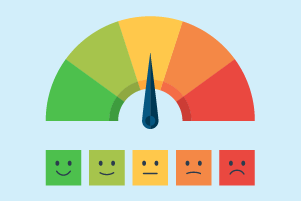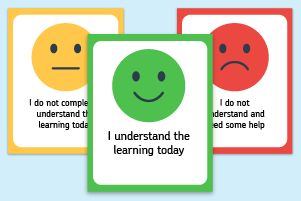3. Teaching and learning
The most impactful assessment happens when there is still time to respond to what you find out.
Classroom assessment helps teachers to probe understanding and provides the evidence they need to decide next steps. Sometimes this will be used formatively to drive learning forward and sometimes in a more summative way to report on previous learning.
Research has identified four key areas that need to be delivered in classrooms:
- Questioning
- Feedback
- Self and peer assessment
- The formative use of tests and quizzes


The strategic use of questioning
Teachers must ask questions that encourage children to explore and make connections with their previous learning. Opportunities to work together to discuss and compare their ideas are of utmost importance.
The teacher’s role is to facilitate this discussion and to listen carefully to what their children say. Instead of chasing correct answers, teachers should encourage their pupils to articulate their understanding so they can see how they are developing their ideas. Ensuring a classroom culture of high quality dialogue is key.
Challenging questions, including those that are based on misconceptions, can be used to support this. Such questions help prompt thinking and lead to rich classroom discussions. These questions can’t be answered immediately; they require several steps that help to draw out evidence of learning and understanding.
Consider
1) What types of questions are you going to ask?
2) When are you going to use them?
3) For what purpose?
How does Testbase support you?
Testbase gives you access to a wide variety of reasoning-based questions, all in the style that test question writers adopt. The fact that all these questions are genuine past test questions adds validity.
By using Testbase, teachers can ensure that their pupils are being exposed to the full range of possible question styles and are ‘flexing their reasoning muscles’ in a variety of different ways. Our search tool enables you to quickly find suitable questions for a target year group, topic or learning objective and at a specified level of difficulty.

But we’ve bought other resources for mathematics.
Why do we need Testbase?
“There is a danger that some published resources might tend to present questions in particular ways (or, for example, represent numerical or geometric models in particular ways). If this is the case, they do not represent the true range of possible ways children might experience things in a test.”
Incorporating Testbase questions into your day-to-day lessons will yield many benefits.
They provide opportunities for high quality classroom talk.

01 Starters
What do the pupils know and understand now?
Assess whether concepts previously taught have become embedded into children’s long term memory.

02 Plenaries
What have the children learned and understood?
Assess how secure pupil knowledge and understanding in the middle and at the end of a lesson to help inform next steps.
NB: Simple adaptations can make questions more accessible or require pupils to think more deeply about a concept.
They provide plenty of opportunities for high quality classroom tasks and activities.

03 Teaching and Learning
Can pupils apply their understanding in a range of contexts?
Closed questions can easily be adapted (by removing the constraints) into open-ended ones providing plenty of opportunities for high quality classroom tasks and activities.

04 Review and Secure
Can the children recall and use the skills and knowledge at home?
Questions can be shared with parents / carers and pupils at home. The mark scheme along with worked answers can be included at a later date for self assessment.
Planning for questioning in this way will help teachers keep the lesson on track and achieve the desired learning outcomes.